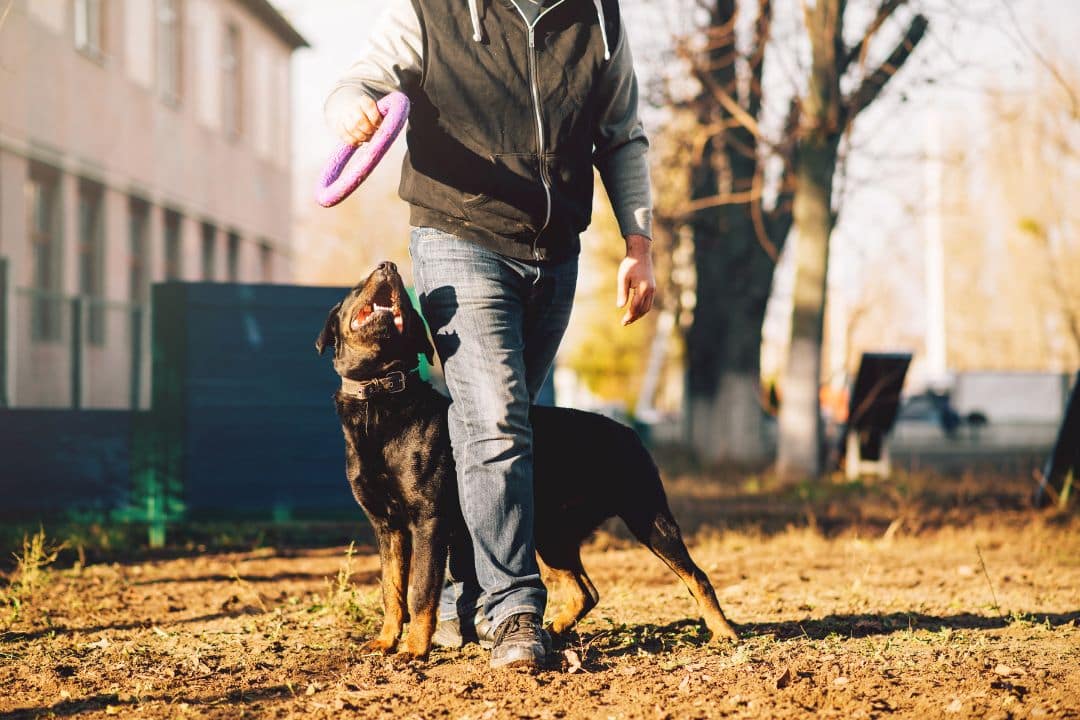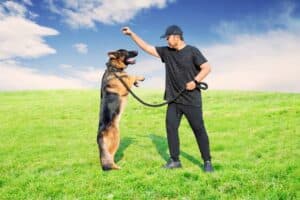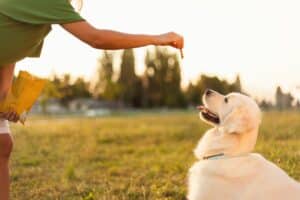
Ultimate Guide to Training Your Dog for Outdoor Adventures
What You’ll Learn About Training Your Dog for Outdoor Adventures
- Assess if your dog is suitable for outdoor adventures based on breed, age, size, and health.
- Tailor training based on your dog’s personality, behavior, and energy levels.
- Teach basic obedience skills, leash training, recall, and safety measures for outdoor activities.
Are you wondering how to train your dog for outdoor adventures? As the bond between humans and their furry companions continues to strengthen, more pet owners are embracing the joys of outdoor adventures with their dogs. Whether it’s hiking, camping, or enjoying a day at the beach, engaging in outdoor activities with your canine companion can be immensely rewarding. However, to ensure a safe and enjoyable experience for both you and your dog, proper training is essential. This comprehensive guide aims to equip pet owners with the knowledge and tools necessary to train their dogs for outdoor adventures, emphasizing the importance of quality, safety, and eco-friendliness in pet products.

Assessing Your Dog’s Suitability for Outdoor Adventures
Evaluating breed, age, size, and health for outdoor activities
Before embarking on outdoor adventures, it’s crucial to assess your dog’s suitability for such activities. Consider your dog’s breed, age, size, and overall health. Certain breeds, such as Border Collies or Australian Shepherds, are well-suited for high-energy activities like hiking, while smaller or brachycephalic breeds may have limitations. Additionally, elderly dogs or those with health issues may require modified activities or shorter excursions.
Understanding your dog’s physical abilities and limitations
Understanding your dog’s physical abilities and limitations is key to planning outdoor activities. Consider factors such as stamina, endurance, and any pre-existing health conditions. Regular visits to the veterinarian can help ensure that your dog is in optimal physical condition for outdoor adventures.
| Consideration | Assessment Criteria |
|---|---|
| Breed | Evaluate if the breed is suitable for high-energy activities or has limitations due to size or physical characteristics |
| Age | Consider if age may affect stamina and endurance for outdoor activities |
| Size | Assess potential limitations for smaller or brachycephalic breeds |
| Health | Consider overall health and any pre-existing conditions that may impact outdoor adventures |

Understanding Your Dog’s Personality and Behavior
Tailoring training based on temperament, behavior, and energy levels
Every dog has a unique personality, and training approaches should be tailored accordingly. Consider your dog’s temperament, behavior, and energy levels when designing training routines. For instance, a high-energy dog may require more vigorous exercise and mental stimulation, while a more reserved dog may benefit from gradual exposure to new environments.
Recognizing the importance of mental stimulation and socialization for outdoor activities
Incorporating mental stimulation and socialization into your dog’s training regimen is vital for preparing them for outdoor adventures. Engage in activities that challenge their problem-solving skills and expose them to different environments, people, and other animals to promote positive social behaviors.
The Importance of Mental Stimulation and Socialization: A Personal Story
Meeting the Needs of an Energetic Pup
As a dedicated dog owner, I understand the importance of mental stimulation and socialization for our furry friends, especially when preparing them for outdoor adventures. One memorable experience was when my energetic Australian Shepherd, Max, was showing signs of restlessness and boredom at home. Recognizing the need to channel his energy in a positive way, I made a conscious effort to engage him in mentally stimulating activities such as puzzle toys, interactive games, and obedience training exercises. Not only did this help alleviate his restlessness, but it also enhanced his overall obedience and responsiveness during our outdoor excursions.
By prioritizing mental stimulation and socialization, I witnessed a remarkable improvement in Max’s behavior, making our outdoor adventures more enjoyable and fulfilling for both of us. This personal experience reaffirmed the significance of understanding our dogs’ individual needs and tailoring their training to provide the necessary mental engagement and social interaction.
Understanding the unique personalities and energy levels of our canine companions is crucial in ensuring their readiness for outdoor activities, making the training process more effective and rewarding for both the pet and the owner.
Building Basic Obedience Skills for Outdoor Adventures
Teaching essential commands for better control and safety outdoors
Basic obedience skills such as “sit,” “stay,” “come,” and “leave it” are invaluable for ensuring control and safety during outdoor activities. Consistent training and positive reinforcement are key to instilling these commands effectively.
Utilizing positive reinforcement techniques for effective training and bonding
Positive reinforcement, such as praise, treats, or toys, is a powerful tool for shaping desirable behaviors in dogs. It not only facilitates effective training but also strengthens the bond between you and your furry companion.

Exposure to Different Environments
Gradually introducing dogs to various outdoor settings and terrains
Gradually exposing your dog to different outdoor settings, such as parks, trails, and bodies of water, helps them acclimate to new environments. Start with familiar surroundings before progressing to more challenging terrains.
Desensitizing dogs to potential distractions or stimuli encountered during outdoor adventures
Dogs may encounter various distractions during outdoor excursions, including wildlife, other dogs, or unfamiliar sounds. Training them to remain focused despite these distractions is essential for their safety and your peace of mind.

Leash Training, Recall, and Safety Measures
Training dogs to walk politely on a leash and respond to recall commands
Leash training and reliable recall are fundamental for keeping your dog safe during outdoor activities. Teaching them to walk without pulling and to come when called enhances their freedom while ensuring control.
Implementing safety measures and emergency preparedness for outdoor excursions
Being prepared for potential emergencies is crucial. Packing essentials like a first aid kit, water, and identification tags, and knowing the nearest veterinary facilities are essential for ensuring your dog’s safety during outdoor adventures.
Tailoring Training for Specific Activities
Adapting training to different outdoor activities such as hiking, camping, or water sports
Different outdoor activities require specific training adjustments. For instance, hiking may involve teaching your dog to navigate different terrains, while water sports may require introducing them to swimming and water safety.
Introducing dogs to necessary equipment and gear for various outdoor adventures
Equip your dog with appropriate gear for different activities. This may include a well-fitted harness, a comfortable and durable leash, and safety gear such as life jackets for water-based activities.

Responsible Outdoor Behavior and Etiquette
Instilling responsible outdoor behavior in dogs and promoting environmental stewardship
Responsible pet ownership extends to outdoor environments. Encourage proper waste disposal, respect for wildlife, and adherence to trail etiquettes to promote a positive image of dog owners in outdoor spaces.
Facilitating positive interactions with other outdoor enthusiasts and their pets
Teach your dog to interact positively with other dogs and people encountered during outdoor excursions. This fosters a welcoming environment for all outdoor enthusiasts and their pets.
Consistency, Patience, and Professional Guidance
Emphasizing the need for consistent training and ongoing reinforcement
Consistency is key to successful training. Regular practice, reinforcement, and patience are essential for ingraining good behaviors and ensuring progress in your dog’s training journey.
Highlighting the benefits of seeking professional guidance from dog trainers or behaviorists
Seeking professional guidance can provide valuable insights and support for addressing specific training challenges or behavioral issues. A professional trainer or behaviorist can offer tailored solutions to enhance your dog’s outdoor training experience.
Celebrating the Journey with Your Dog
Embracing the bond and shared experiences with your dog during outdoor adventures
Outdoor adventures with your dog are opportunities to strengthen your bond and create cherished memories. Celebrate the milestones achieved and the joy of experiencing the great outdoors together.
Acknowledging achievements and milestones in your dog’s outdoor training journey
Recognize and celebrate your dog’s progress. Whether it’s mastering a new skill or displaying exemplary behavior during an outdoor activity, acknowledging their achievements reinforces positive behaviors.
In conclusion, training your dog for outdoor adventures involves careful consideration of your dog’s physical abilities, temperament, and obedience skills. By following the comprehensive guide provided, you can ensure that both you and your furry companion have a safe and enjoyable experience in the great outdoors.
Common Questions
Who can benefit from training their dog for outdoor adventures?
Anyone who enjoys outdoor activities and wants to include their dog.
What are the key benefits of training your dog for outdoor adventures?
Training your dog for outdoor adventures can improve their obedience and safety.
How can I start training my dog for outdoor adventures?
Start with basic obedience training and gradually introduce outdoor elements.
What if my dog is not responding well to the training?
Be patient and consistent, and consider seeking professional help if needed.
What equipment do I need for outdoor adventures with my dog?
You may need a sturdy leash, harness, water, and dog-friendly gear.
How do I ensure my dog’s safety during outdoor adventures?
Keep your dog on a leash, be aware of potential hazards, and always carry essentials.
With over a decade of experience as a certified professional dog trainer and behavior consultant, Jacob Anderson is dedicated to promoting responsible and enjoyable outdoor adventures with canine companions. Their expertise stems from a background in animal behavior and training, with a focus on positive reinforcement techniques backed by the latest research in canine cognition and learning. Jacob Anderson has contributed to several studies on the impact of outdoor activities on canine mental and physical well-being, emphasizing the importance of tailored training to meet individual dog’s needs. As a passionate advocate for environmental stewardship and dog welfare, they regularly collaborate with outdoor organizations and veterinary professionals to develop comprehensive training programs. With a commitment to ongoing education and professional development, Jacob Anderson continues to empower dog owners to cultivate strong bonds and safe experiences with their four-legged friends in the great outdoors.
Facebook
Pinterest
Twitter
LinkedIn

